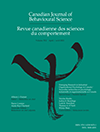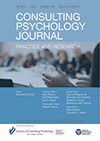Times of Crisis
Feature
Leadership in times of crisis
Psychologists' inquiry and expertise tin can assistance leaders communicate clearly and back up their communities through the pandemic

Disasters can make or pause a leader. In the era of COVID-xix, some leaders have risen to the challenge—keeping their communities, employees and students informed, pausing and restarting daily life, and managing the secondary effects of social and economic disruption.
Other leaders, meanwhile, are floundering—communicating poorly, not providing trustworthy information and failing to follow through on promises.
Although the pandemic differs from other crises in our lifetime, psychologists' research and expertise, developed in past crises, tin can still inform our responses, say those who accept studied crisis leadership. Overall, their work has shown that leaders who communicate effectively and learn from their mistakes are poised for success. Those who dissemble and vacillate tin harm and alienate their constituencies.
"What leaders have to realize is that when a crisis hits, you tin can't just rest on your accolade and call up that everything volition motility along ordinarily," says Ronald Riggio, PhD, a professor of leadership and organizational psychology at Claremont McKenna College in California. "You need to train, ready and execute."
Clear communication
Perhaps the most essential element of crisis leadership is clear and trustworthy communication. Best practices for crisis communication, established through years of psychological and organizational enquiry, include transparency, honesty and empathy.
Communicating well starts with understanding the questions your audition has, and so talking to experts and reviewing data to respond them accurately. Leaders then need to develop and test letters to ensure they don't misfile people, says psychologist Baruch Fischhoff, PhD, a professor in the section of engineering and public policy at Carnegie Mellon University.
For example, California Gov. Gavin Newsom has relied heavily on the expertise of physicians and public health professionals in crafting his messages to constituents, including by featuring these experts during his printing briefings.
Throughout the coronavirus crisis, leaders have had to relay a lot of bad news—extensions of stay-at-home orders, big-scale furloughs and layoffs, sickness and expiry. But leadership scholars agree that even in such dire circumstances, honesty is the best policy.
"Total transparency is essential," says psychologist Jeremy Hunter, PhD, an associate professor of practise and founding director of the Executive Mind Leadership Institute at the Drucker School of Management at Claremont Graduate University in California. "Leaders who withhold information essentially shoot themselves in the pes because that breeds mistrust and uncertainty."
Research by Fischhoff and Roxane Cohen Silverish, PhD, a professor in the department of psychological science at the University of California, Irvine, shows that the public prefers honest answers, even when the news is bad—and that it's tough for leaders who lose trust to gain information technology back (Risk Analysis, Vol. 38, No. ane, 2018). In this moment, that includes admitting that much virtually the coronavirus—and how it volition bear upon our lives in the coming months—remains unknown.
"Minimizing the incertitude of what we're going through is disingenuous," Silver says. "What we tin practise is acknowledge that uncertainty is associated with anxiety—so the feet that many people are feeling right at present is an appropriate reaction.
Finally, in communicating data to their followers, leaders should keep in heed that some people take trouble agreement numbers or performing mental math. That doesn't mean leaders should avoid sharing numeric information, says Ellen Peters, PhD, a psychologist and director of the Middle for Scientific discipline Communication Inquiry in the Academy of Oregon'southward School of Journalism and Communication.
"Providing numbers corrects misperceptions," she says. "People are far more than likely to overestimate sure risks if y'all don't requite them numbers" (Medical Determination Making, Vol. 34, No. 4, 2013).
That said, leaders sharing numeric data should do what they can to reduce the cognitive effort required of their audiences. That means providing only necessary information and doing calculations ahead of time to make data more relevant and digestible, says Peters. It tin also include visual representations of numeric information and structured lists that outline what readers can expect in a longer piece of written communication "Health Literacy and Numeracy: Workshop Summary," (National Academies Printing, 2014).
Readiness is key
Though crises are nearly past definition unexpected, constructive leaders tin can and should still prepare for them, says Fischhoff. "Y'all'll frequently hear leaders say they didn't have fourth dimension to answer effectively in an emergency," he says. "But if you didn't have fourth dimension, you lot didn't practice your job. Your job is to be ready, know your audition and get them clear and authentic data about what'south going on."
Public officials and leaders of large organizations should ideally consummate preparation in crisis leadership—which typically teaches leaders to manage emotions, gather emergency task forces and maximize engineering and communication channels, says Riggio. At a minimum, he says, other leaders, such as small business concern owners, should have action plans in place for various potential emergencies, including an economic crisis, major lawsuit or natural disaster.
When a crisis hits, leaders should focus on managing their internal experience first before providing direction to their teams and communities, Hunter says. "Leaders should retrieve about themselves every bit islands of coherence in a bounding main of chaos," he says. "Your ability to manage yourself in this procedure—to stay grounded and articulate in a state of affairs that's totally disorienting—is really what will make or intermission you."
I fashion to do that is to manage your ain attending, including by engaging with media in a "Goldilocks way"—not likewise petty, not too much, Hunter says. Too trivial information volition leave leaders uninformed; as well much tin can be overwhelming.
But managing also involves tuning in to your own internal emotional responses and agreement how those responses can influence controlling, Hunter says. "What's happening in your torso during a crisis? And how is that influencing the way you make sense of a state of affairs and brand decisions about it?" he asks. "If you can't see that consciously, then y'all've got one arm tied behind your dorsum in terms of your capacity to remember clearly about your options. If y'all're locked in fear, your ability to develop creative solutions is limited."
Takeaway lessons
Following a crisis, Riggio recommends conducting an after-action review (AAR), a structured debrief pioneered by the U.S. Army that involves analyzing an incident, the response and lessons learned. "When it comes to leadership evolution, leaders tend to learn more from their mistakes than from their successes," he says.
An AAR should include steps to forbid a future crisis—but as well strategies for responding in the inevitable event that one occurs. This focused discussion should have place equally before long as possible following a crisis and outline concrete guidelines for preventing or managing like incidents moving forward, says Riggio.
For example, the Federal Emergency Management Agency and several other organizations conducted AARs following Hurricanes Katrina, Rita and Harvey to assess preparedness and response operations, recommending improvements in staffing, housing solutions and other areas (ASPR TRACIE Technical Aid Request, U.S. Department of Wellness and Human Services, 2018).
A crisis can leave leaders and their communities shaken, only information technology can also nowadays an opportunity for growth.
"Crises are places where we observe our greatness because they push us in ways that, in times of normalcy, we don't get pushed. We find strengths and abilities that are latent inside us," Hunter says. "Equally a leader, this kind of crisis is an opportunity to find your greatness and to activate that in other people around y'all."
Leading in a time of crisis
Leadership is beingness tested in ways the world hasn't seen in generations.
In every corner of the state, new leaders accept stood upward to address the ongoing crises of the COVID-19 pandemic, a new enkindling to racial injustice, and political strife.
Some of these new leaders are protestors in the streets speaking out—some for the kickoff fourth dimension in their lives. Other new leaders are health care providers and essential workers who are on the front lines of a crunch that is causing them stress in their own lives. Meanwhile, educators have been forced to rethink the way they teach our youth.
Hosted by Amy Walter, national editor of The Cook Political Report, this main phase event from APA 2020 looks at the ways leaders tin thrive in this unique time, and how to handle being tested and challenged every twenty-four hours.
Speakers include:
- Stacey Abrams, politician, nonprofit CEO, and voting rights activist
- Ali Mattu, PhD, creator and host of "The Psych Show"
- Tarana Shush, founder of the Me Too Motility
- Ellen Peters, PhD, University of Oregon
- Sandra L. Shullman, PhD, Executive Development Group partner and APA's 2020 president
- Tom Kolditz, PhD, Rice University
For more information and full access, visit APA 2020. Sign up for updates on APA 2021.
Psychologists and political organizers detail the scientific discipline backside being a better leader
Resources
Recommended Reading



Members may qualify for lower pricing
Contact APA
Source: https://www.apa.org/monitor/2020/07/leadership-crisis
0 Response to "Times of Crisis"
Post a Comment